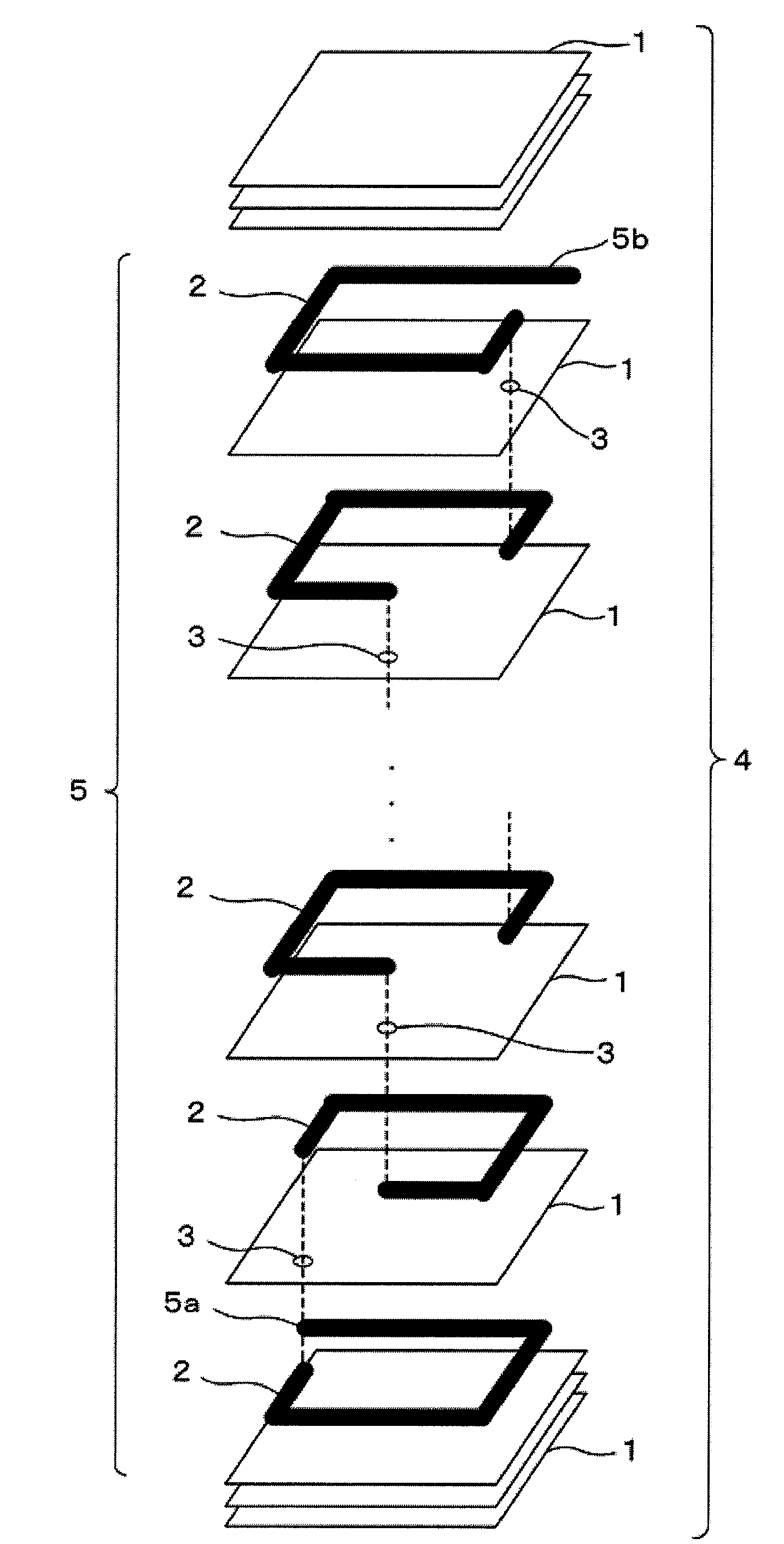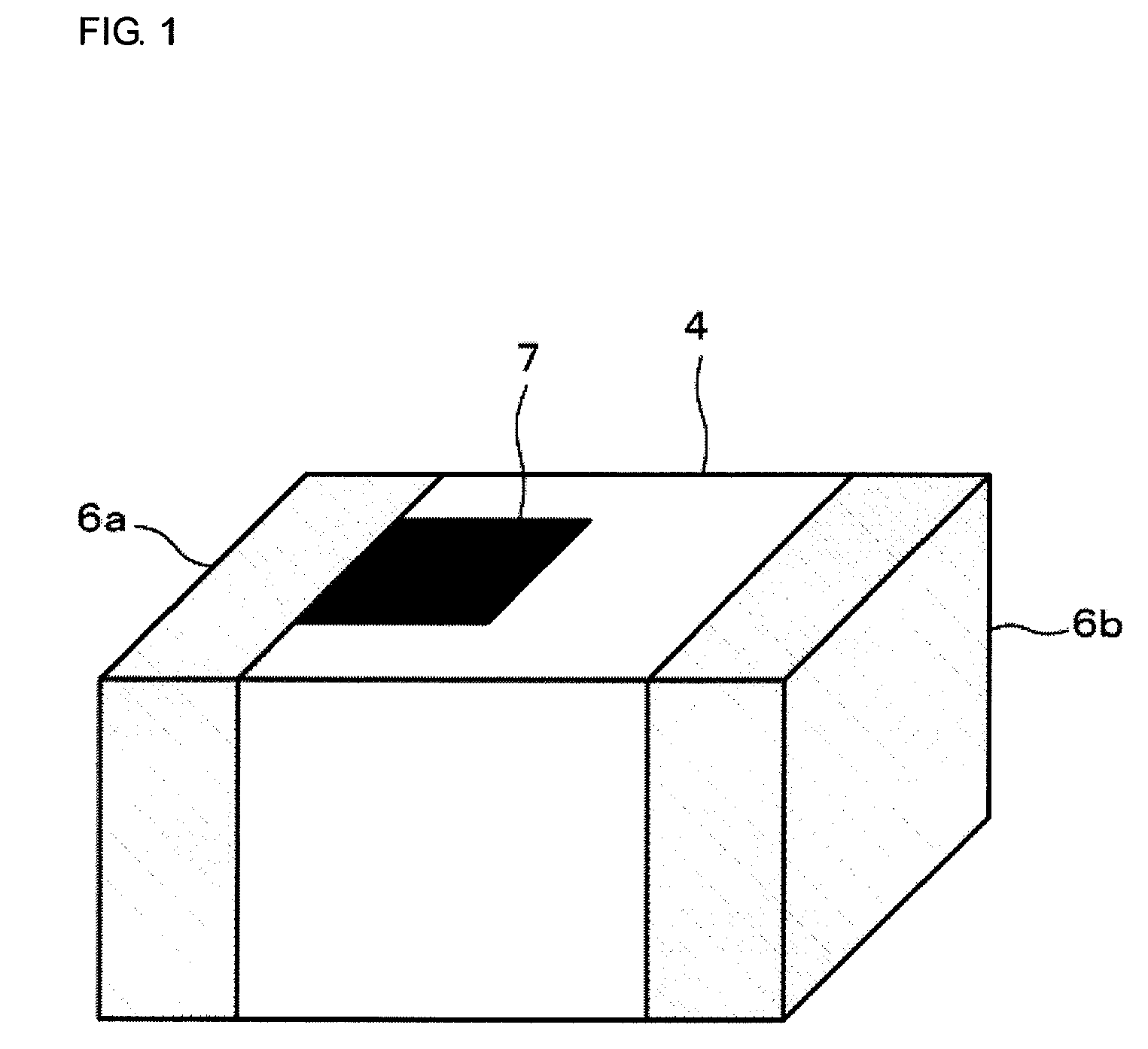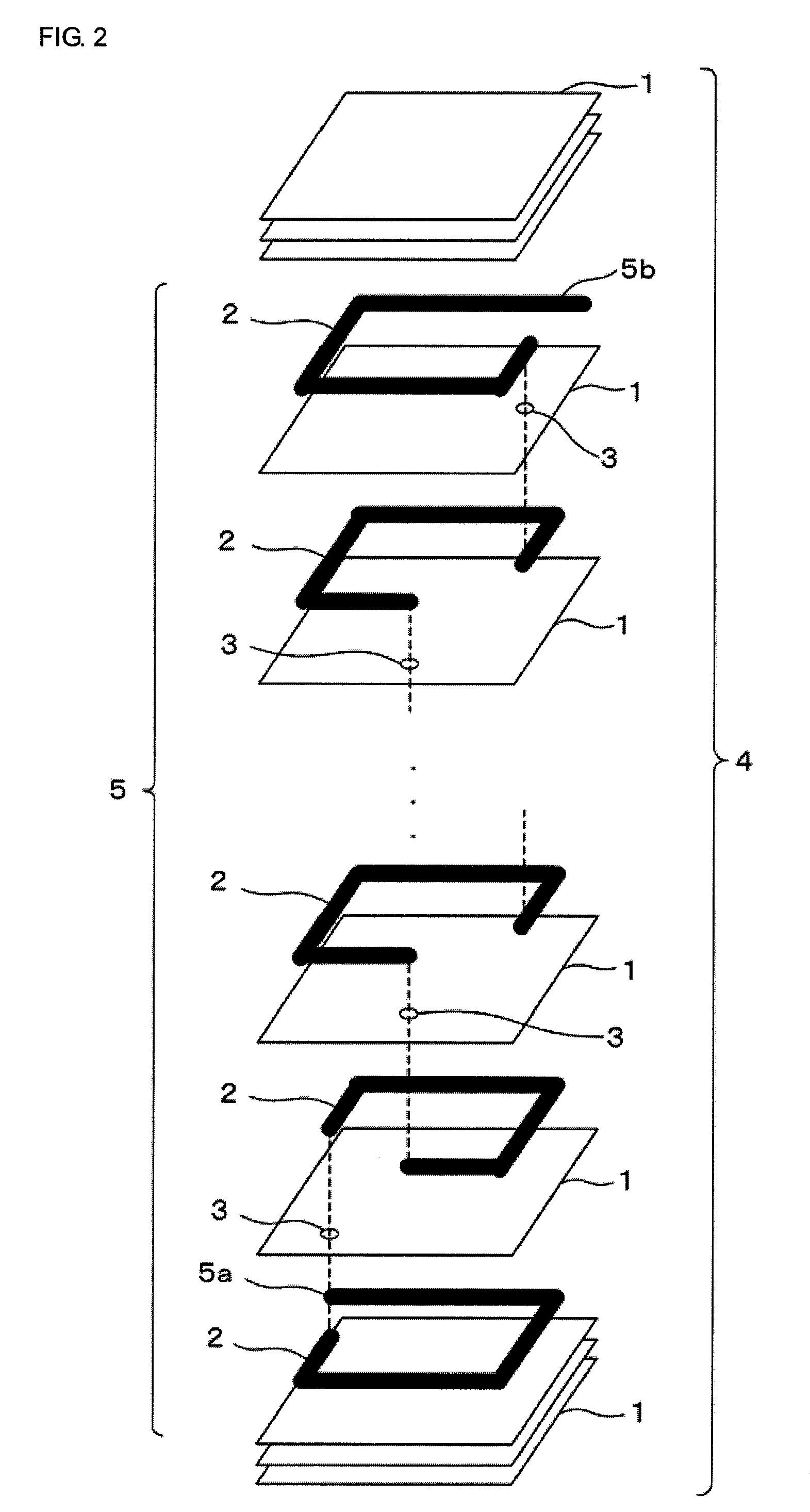Photosensitive glass paste and multilayer wiring chip component
a technology of multi-layer wiring and photosensitive glass, which is applied in the direction of photomechanical equipment, instruments, and semiconductor/solid-state device details, etc., can solve the problems of disadvantageous degradation of insulating properties between layers and inferior wettability, and achieve superior wettability to ceramic aggregates, low-temperature and short-time sintering
- Summary
- Abstract
- Description
- Claims
- Application Information
AI Technical Summary
Benefits of technology
Problems solved by technology
Method used
Image
Examples
example 1
[0058]Hereinafter, features of the present invention will be further described in detail with reference to examples of the present invention.
[Formation of Photosensitive Glass Paste]
[0059]As shown in Table 1,
[0060](a) as a primary glass, a borosilicate glass (Si—B—K-based glass) (glass A, contact angle to alumina at 800° C.: ≧90°, glass softening point Ts: 790° C.) containing SiO2, B2O3, and K2O at a predetermined ratio was prepared.
[0061](b) As a sintering aid glass, a Si—B—Li—Ca—Zn-based borosilicate glass (glass B, contact angle to alumina at 800° C.: 26°, glass softening point Ts: 718° C.) containing SiO2, B2O3, Li2O, CaO, and ZnO at a predetermined ratio was prepared.
[0062](c) As a sintering aid glass, a Si—B—Li—Ca—Zn-based borosilicate glass (glass C, contact angle to alumina at 800° C.: 44°, glass softening point Ts: 609° C.) containing SiO2, B2O3, Li2O, CaO, and ZnO at a predetermined ratio was prepared.
[0063]Glasses (b) and (c) were glasses that satisfied requirements for a...
example 2
[0101]In this Example 2, a multilayer wiring chip component manufactured using a photosensitive glass paste of the present invention will be described.
[0102]FIG. 1 is a perspective view showing an external structure of a multilayer wiring chip component (multilayer inductor) according to one embodiment of the present invention, and FIG. 2 is an exploded perspective view showing an internal structure thereof.
[0103]The multilayer wiring chip component of this Example 2 has the structure, as shown in FIGS. 1 and 2, in which conductor layers (internal conductors) 2 containing Ag as a primary component are laminated to each other with glass layers (insulating layers) 1 formed therebetween using the photosensitive glass paste of the present invention, and in which the conductor layers (internal conductors) 2 are connected to each other through via holes 3 (see FIG. 2) to form a spiral coil 5 in a laminate 4.
[0104]External electrodes 6a and 6b (FIG. 1) are provided on two end sides of the ...
PUM
| Property | Measurement | Unit |
|---|---|---|
| Temperature | aaaaa | aaaaa |
| Temperature | aaaaa | aaaaa |
| Percent by mass | aaaaa | aaaaa |
Abstract
Description
Claims
Application Information
 Login to View More
Login to View More - R&D
- Intellectual Property
- Life Sciences
- Materials
- Tech Scout
- Unparalleled Data Quality
- Higher Quality Content
- 60% Fewer Hallucinations
Browse by: Latest US Patents, China's latest patents, Technical Efficacy Thesaurus, Application Domain, Technology Topic, Popular Technical Reports.
© 2025 PatSnap. All rights reserved.Legal|Privacy policy|Modern Slavery Act Transparency Statement|Sitemap|About US| Contact US: help@patsnap.com



